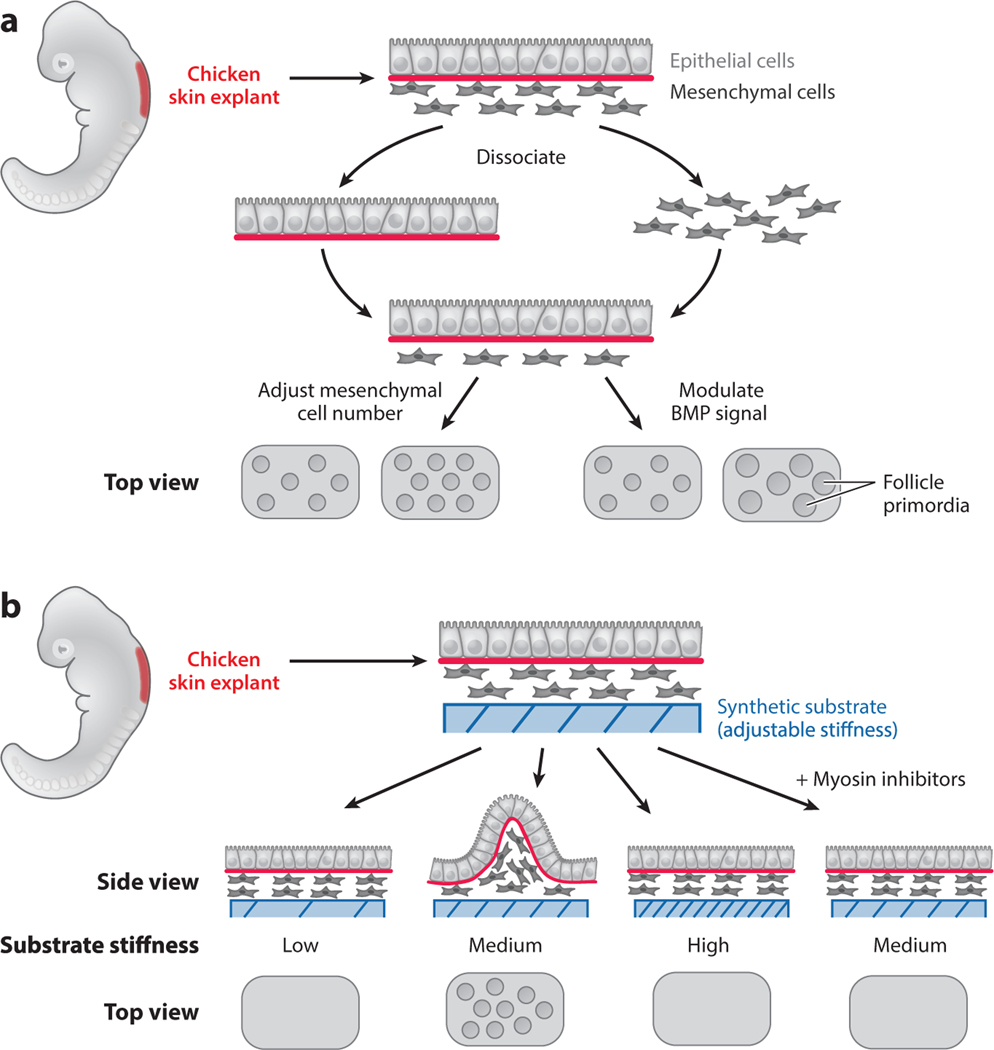Figure 4.
Chemical or physical cues can act on the same patterning process. Chicken skin explants were used to study the mechanism of feather follicle primordia formation. (a) Mesenchymal cells from the skin explant were dissociated from the epithelial cells and plated in vitro. An intact epithelial layer was then placed on top of the mesenchymal cells. Primordia formed spontaneously in the reconstituted system. The spacing between the primordia could be modulated by adjusting the number of mesenchymal cells seeded, and the size of the primordia could be modulated by the activity of the bone morphogenetic protein (BMP) signaling. (b) To test the role of physical cues in primordia formation, skin explants composed of both epithelial and mesenchymal cells were placed on top of engineered gels with defined stiffness. Primordia can form only on the substrate with intermediate stiffness (Medium). Primordia formation also depends on mesenchymal cell contraction, which can be blocked by myosin inhibitors.

